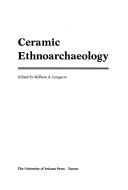| Listing 1 - 3 of 3 |
Sort by
|
Book
ISBN: 9781407358420 1407358421 Year: 2024 Publisher: Oxford, UK : BAR Publishing,
Abstract | Keywords | Export | Availability | Bookmark
 Loading...
Loading...Choose an application
- Reference Manager
- EndNote
- RefWorks (Direct export to RefWorks)
Archaeology --- Archéologie communautaire --- Archéologie --- Community archaeology --- Excavations (Archaeology) --- Fouilles (Archéologie) --- Palawan (Philippines : Province) --- Palawan (Philippines) --- Palawan Island (Philippines) --- History. --- Histoire. --- Antiquities. --- Archéologie --- Archéologie communautaire --- Fouilles (Archéologie)
Book
ISBN: 9780292772014 9780292772021 9781477303948 9781477303955 1477303944 1477303952 0292772017 0292772025 Year: 2015 Publisher: Austin
Abstract | Keywords | Export | Availability | Bookmark
 Loading...
Loading...Choose an application
- Reference Manager
- EndNote
- RefWorks (Direct export to RefWorks)
Around 400 BCE, inhabitants of the Southern Andes took up a sedentary lifestyle that included the practice of agriculture. Settlements were generally solitary or clustered structures with walled agricultural fields and animal corrals, and the first small villages appeared in some regions. Surprisingly, people were also producing and circulating exotic goods: polychrome ceramics, copper and gold ornaments, bronze bracelets and bells. To investigate the apparent contradiction between a lack of social complexity and the broad circulation of elaborated goods, archaeologist Joan Gero co-directed a binational project to excavate the site of Yutopian, an unusually well-preserved Early Formative village in the mountains of Northwest Argentina. In Yutopian, Gero describes how archaeologists from the United States and Argentina worked with local residents to uncover the lifeways of the earliest sedentary people of the region. Gero foregounds many experiential aspects of archaeological fieldwork that are usually omitted in the archaeological literature: the tedious labor and constraints of time and personnel, the emotional landscape, the intimate ethnographic settings and Andean people, the socio-politics, the difficult decisions and, especially, the role that ambiguity plays in determining archaeological meanings. Gero’s unique approach offers a new model for the site report as she masterfully demonstrates how the decisions made in conducting any scientific undertaking play a fundamental role in shaping the knowledge produced in that project.
Excavations (Archaeology) --- Indians of South America --- Community archaeology --- Archaeology --- Fouilles (Archéologie) --- Indiens d'Amérique --- Archéologie communautaire --- Archéologie --- Antiquities --- Fieldwork. --- Antiquités --- Recherche sur le terrain --- Catamarca (Argentina : Province) --- Argentina, Northwest --- Catamarca (Argentine : Province) --- Argentine (Nord-Ouest) --- Antiquities. --- Fouilles (Archéologie) --- Indiens d'Amérique --- Archéologie communautaire --- Archéologie --- Antiquités

ISBN: 0816511985 0816548773 Year: 2022 Publisher: University of Arizona Press
Abstract | Keywords | Export | Availability | Bookmark
 Loading...
Loading...Choose an application
- Reference Manager
- EndNote
- RefWorks (Direct export to RefWorks)
Ethnoarchaeology, the study of material culture in a living society by archaeologists, facilitates the extraction of information from prehistoric materials as well. Studies of contemporary pottery-making were initiated in the southwestern United States toward the end of the nineteenth century, then abandoned as a result of changes in archaeological theory. Now a resurgence in ethnoarchaeology over the past twenty-five years offers a new set of directions for the discipline. This volume presents the results of such work with pottery, a class of materials that occurs abundantly in many archaeological sites. Drawing on projects undertaken around the world, in the Phillipines, East Africa, Mesoamerica, India, in both traditional and complex societies, the contributors focus on identifying social and behavioral sources of ceramic variation to show how analogical reasoning is fundamental to archaeological interpretation. As the number of pottery-making societies declines, opportunities for such research must be seized. By bringing together a variety of ceramic ethnoarchaeological analyses, this volume offers the profession a much-needed touchstone on method and theory for the study of pottery-making among living peoples.
Ethnoarchaeology --- Congresses --- Pottery --- Analysis --- Congresses. --- Ethnoarcheologie --- Ceramique --- Keramiek. --- Etnoarcheologie. --- Ethnoarchaeology. --- Congres. --- Analysis. --- Analyse --- Ceramic art --- Ceramics (Art) --- Chinaware --- Crockery --- Earthenware --- Pottery, Primitive --- Ceramics --- Decorative arts --- House furnishings --- Firing (Ceramics) --- Saggers --- Ethnic archaeology --- Ethnicity in archaeology --- Ethnology in archaeology --- Archaeology --- Ethnology --- Social archaeology --- Art céramique --- Céramique d'art --- Céramique domestique --- Céramiques --- Contribution à la céramique --- Oeuvres --- Poterie --- Poteries --- Céramique --- Céramique industrielle --- Céramistes --- Fours à céramique --- Moules céramiques --- Sculpture en céramique --- Tours de potiers --- Barbotine (céramique) --- Biscuit (céramique) --- Céladon --- Céramique antique --- Céramique architecturale --- Céramique d'artistes --- Céramique de la Renaissance --- Céramique en décoration intérieure --- Céramique lustrée --- Céramique médiévale --- Céramique noire --- Céramique préhistorique --- Céramique vernissée --- Engobes --- Faïence --- Grès (céramique) --- Porcelaine --- Sifflet de céramique --- Terres cuites --- Vaisselle en céramique --- Arts du feu --- Archéologie et ethnologie --- Ethnologie archéologique --- Anthropologie historique --- Archéologie sociale --- Société préhistorique --- Archéologie --- Ethnologie --- Methodology --- Décoration --- Industrie et commerce --- Marques --- Marques de propriété --- Technique --- [Localisations géographiques] --- Méthodologie --- Society & culture: general --- Archéologie communautaire
| Listing 1 - 3 of 3 |
Sort by
|

 Search
Search Feedback
Feedback About UniCat
About UniCat  Help
Help News
News